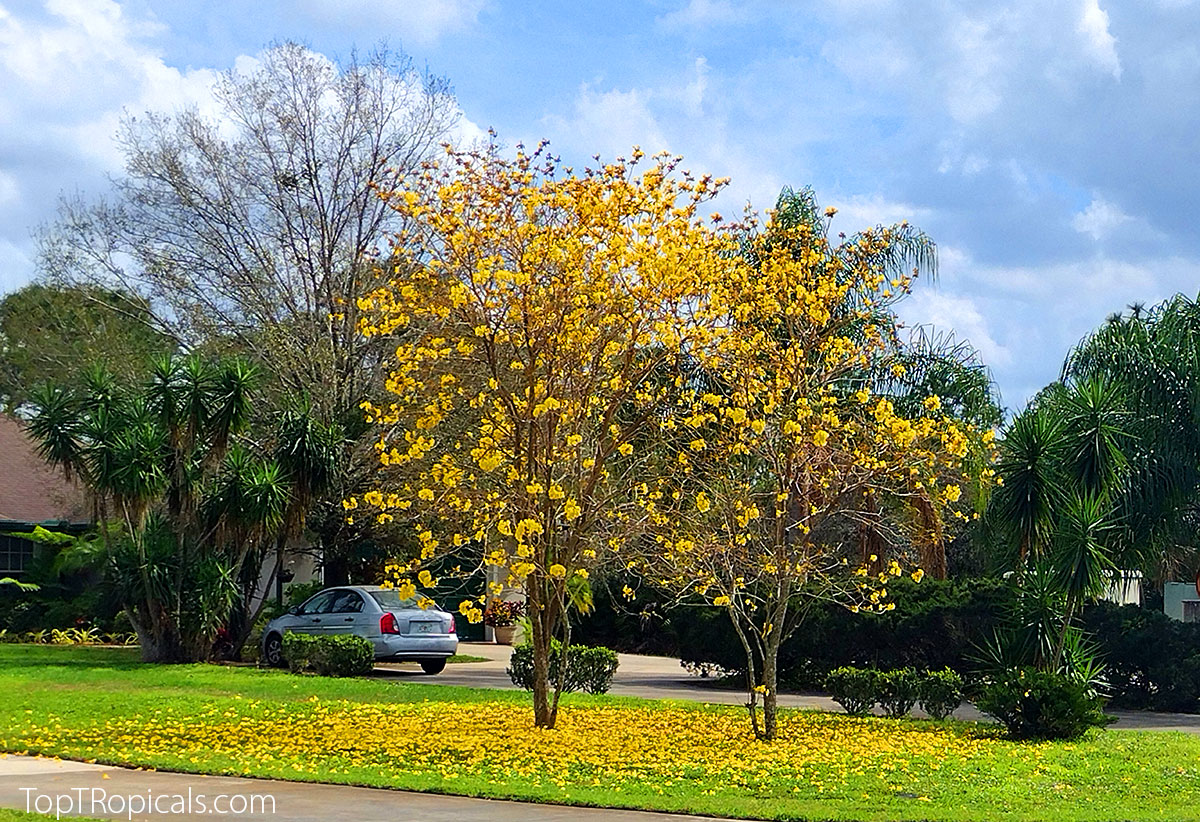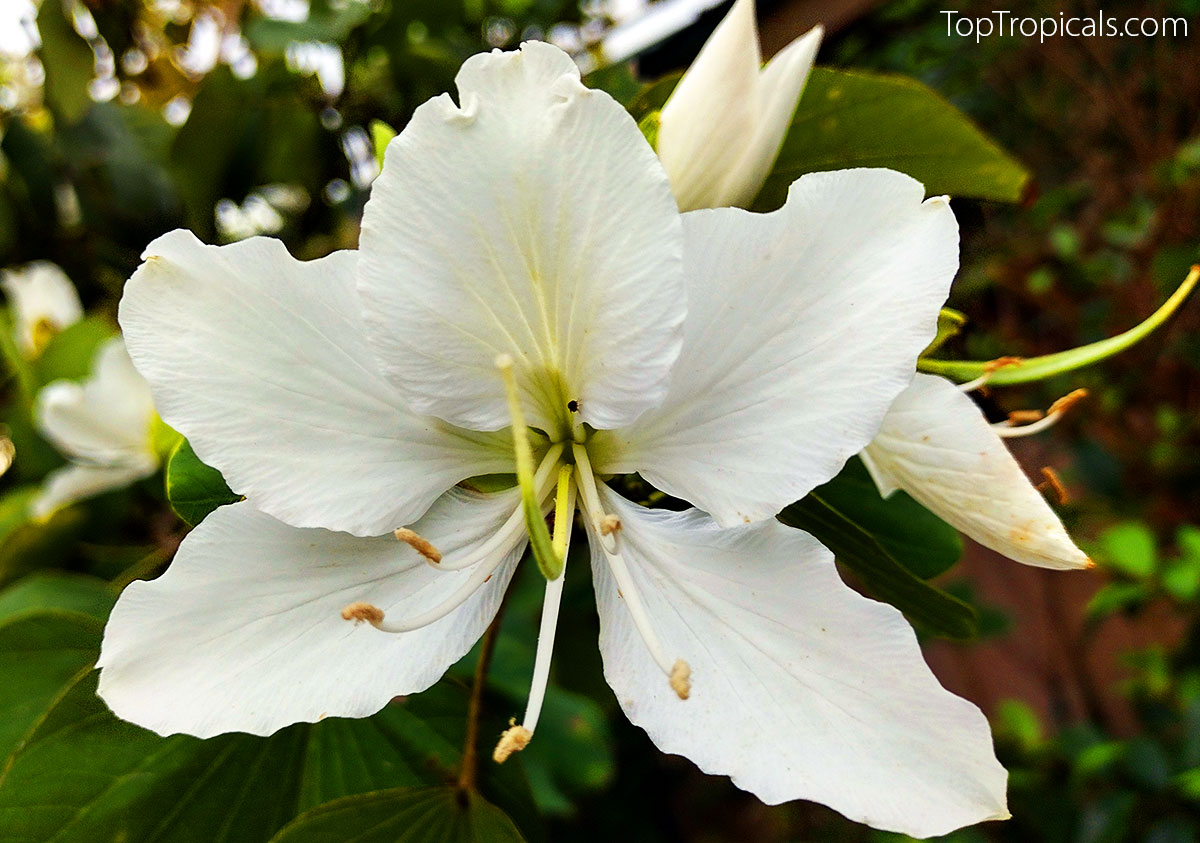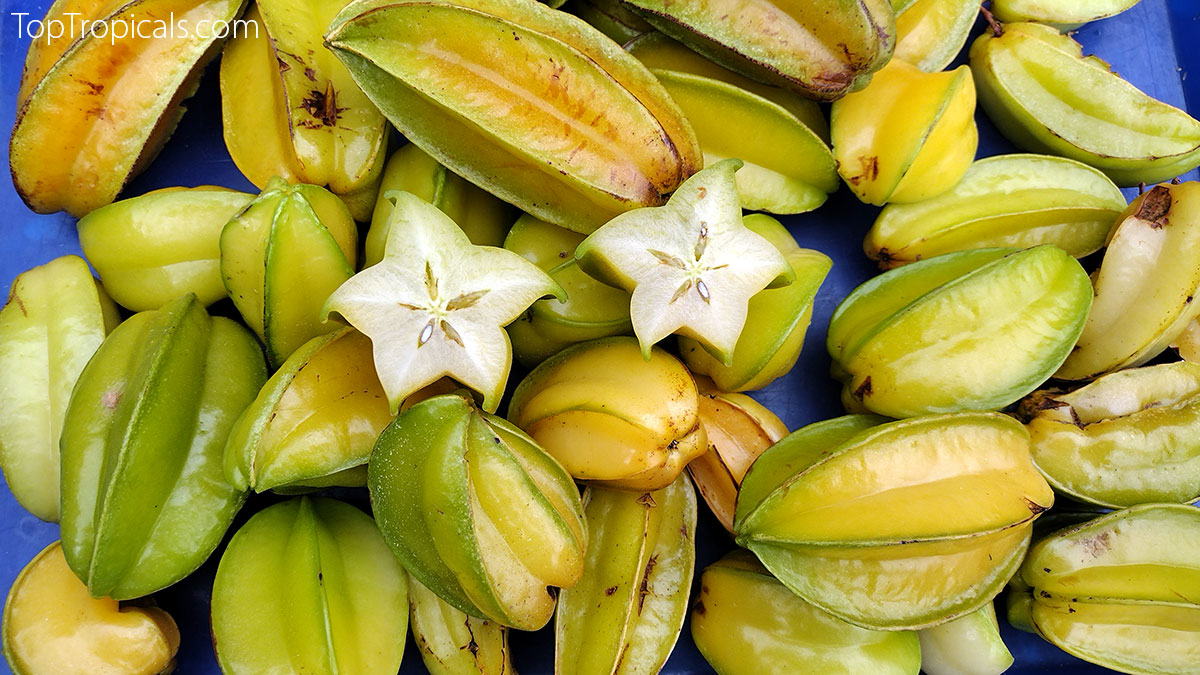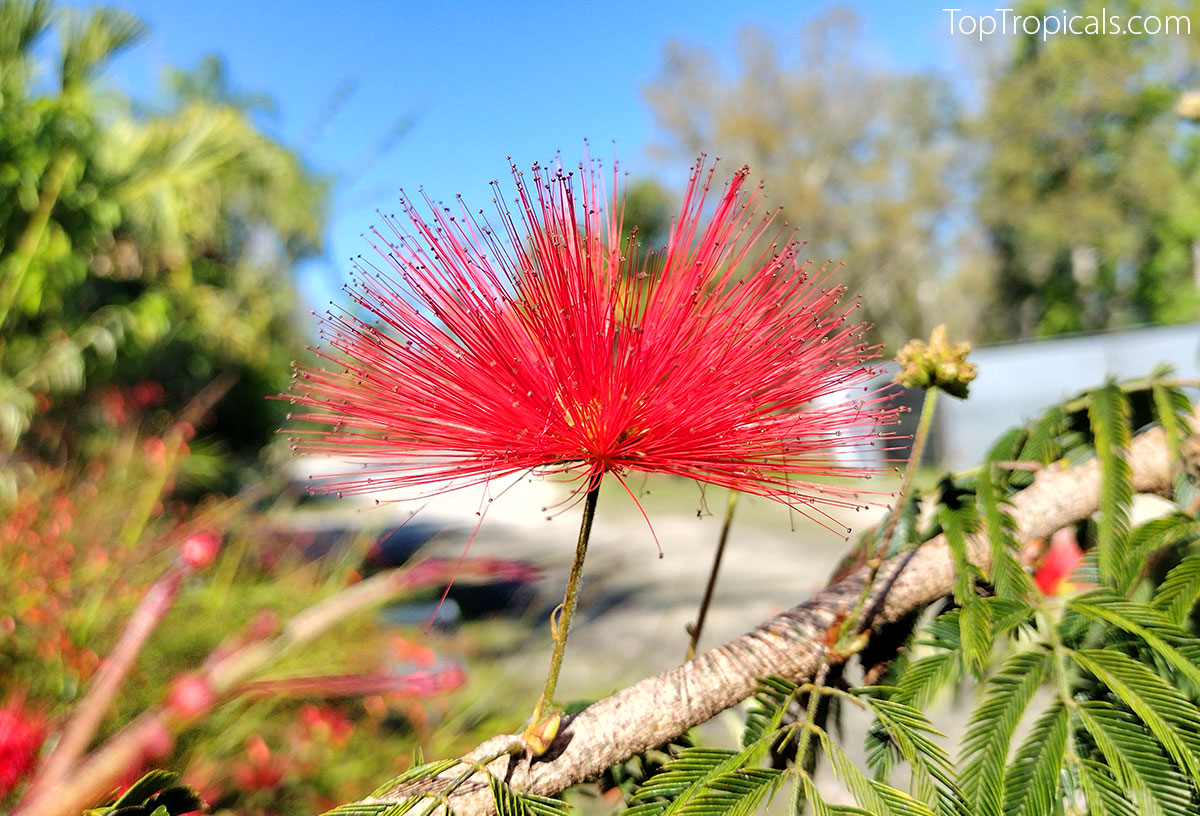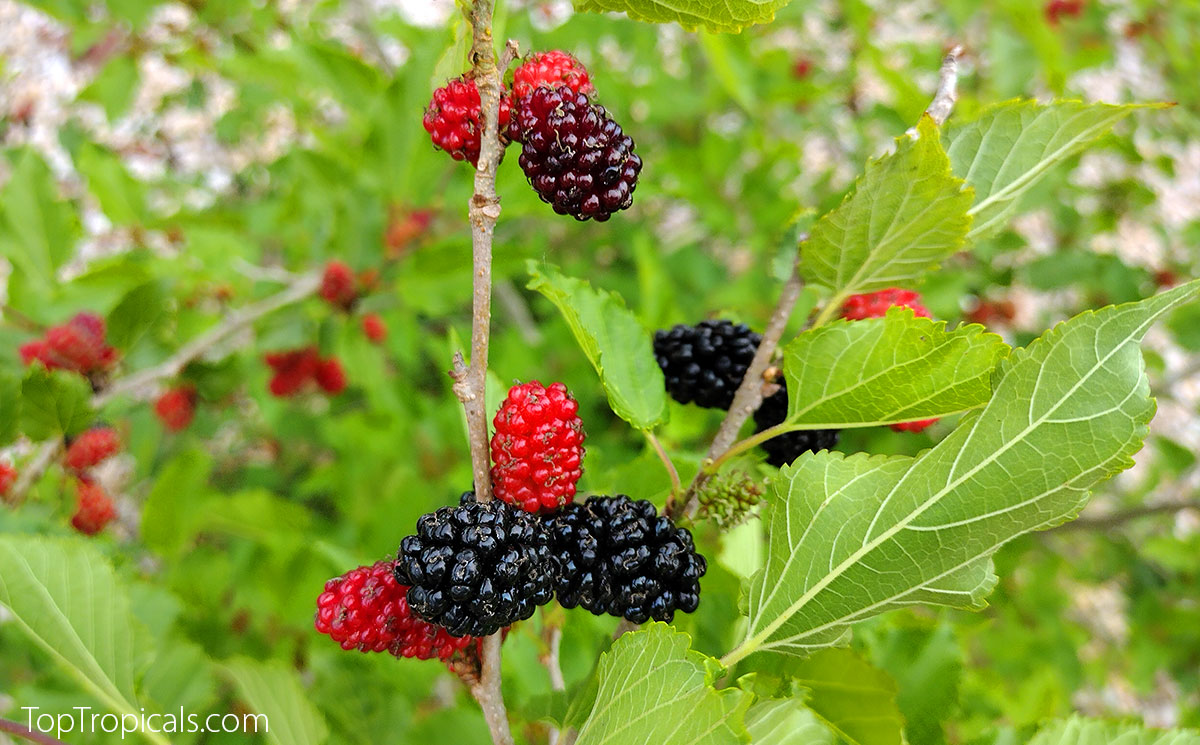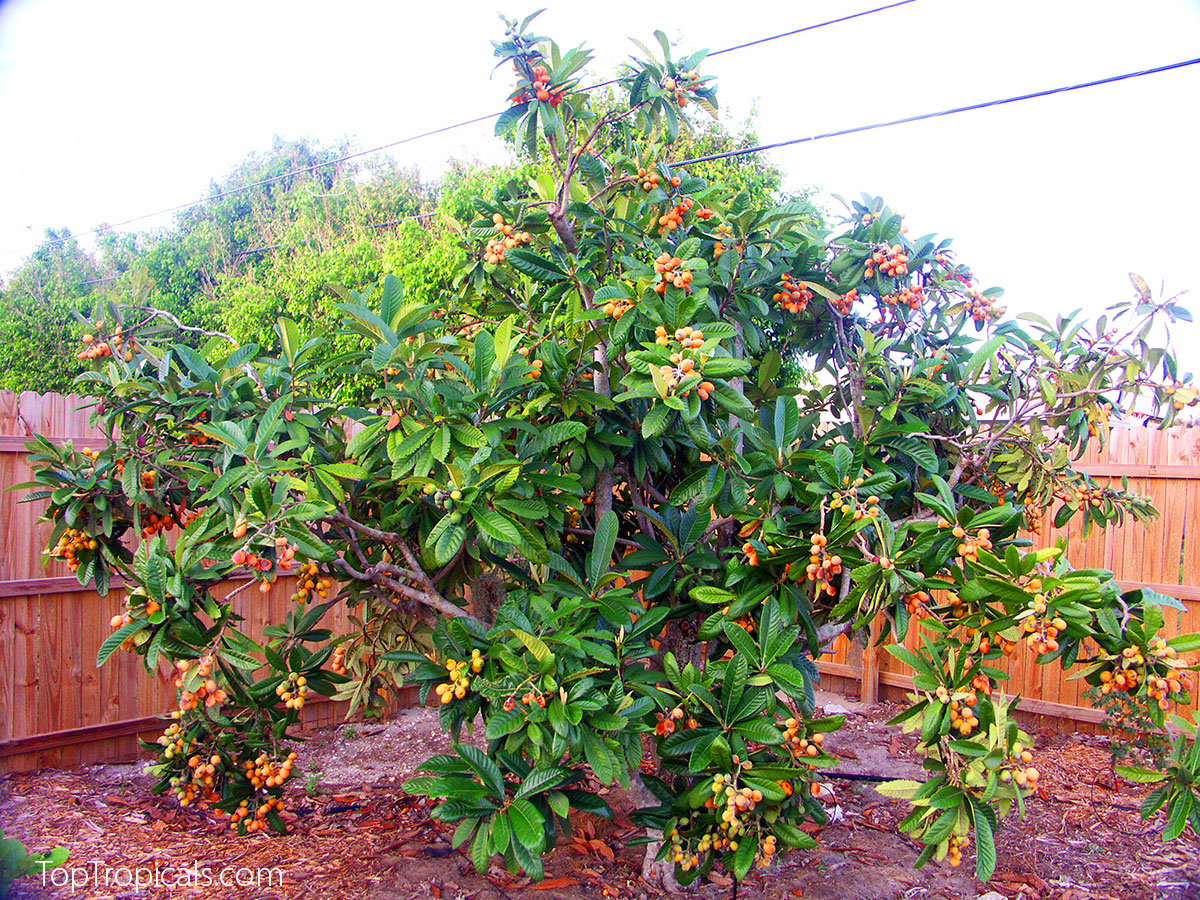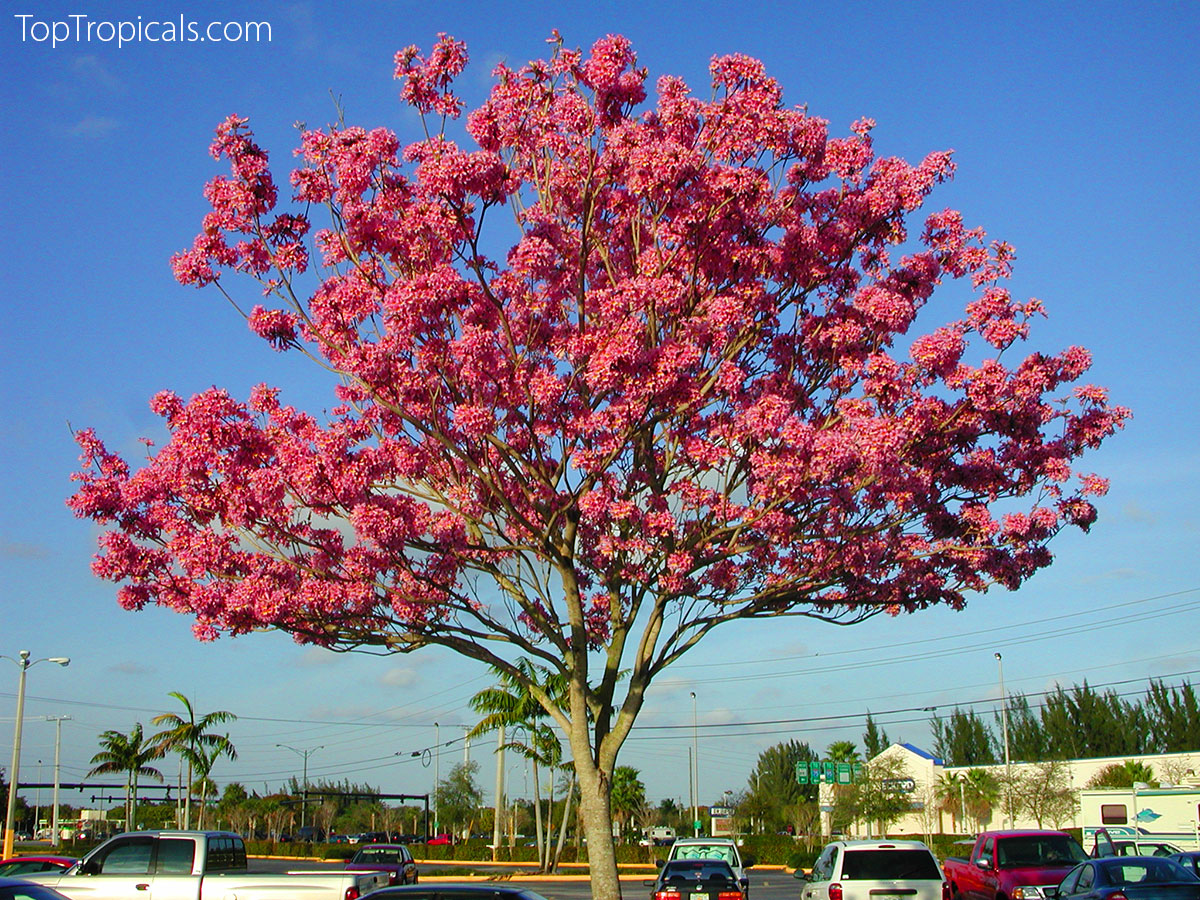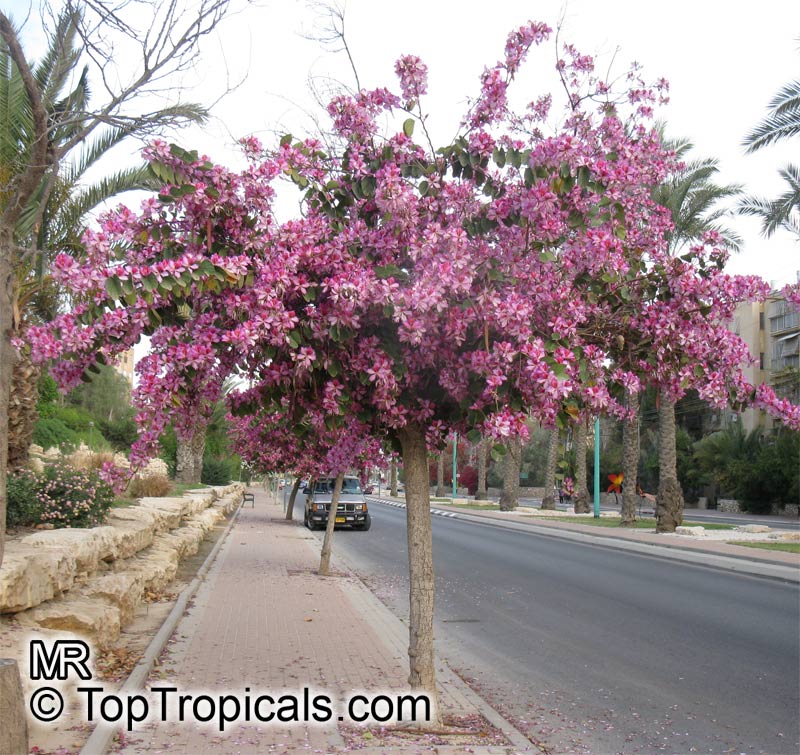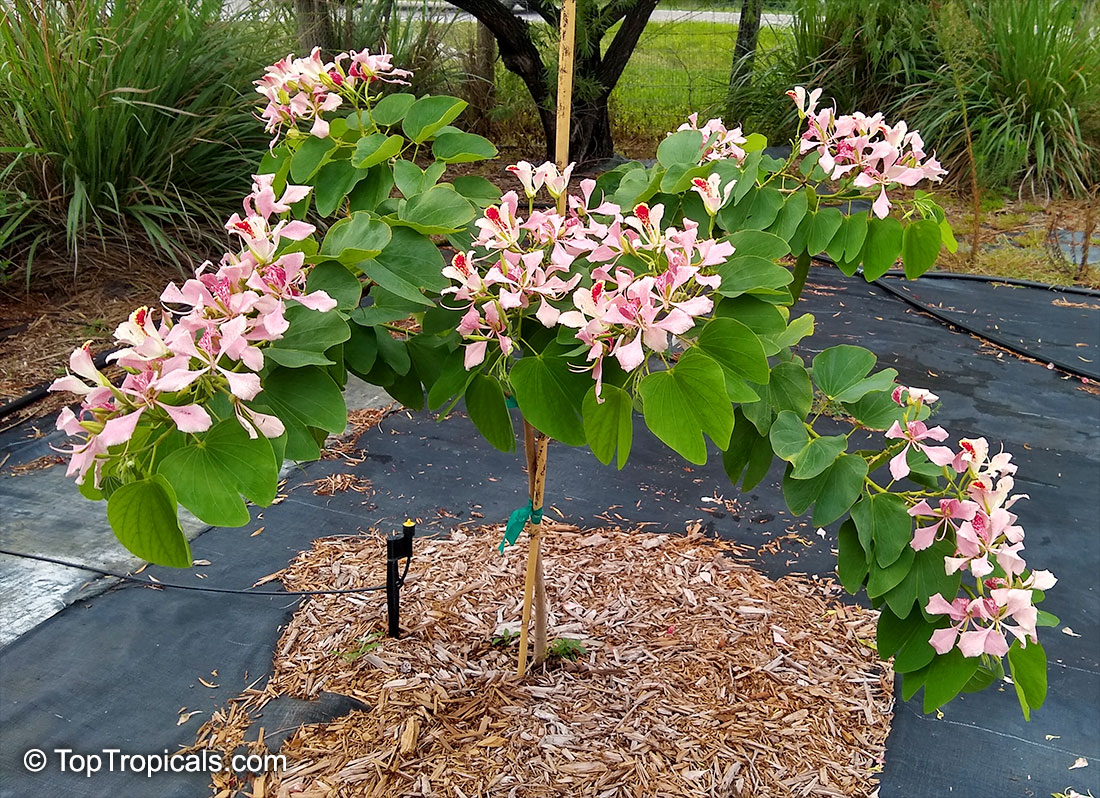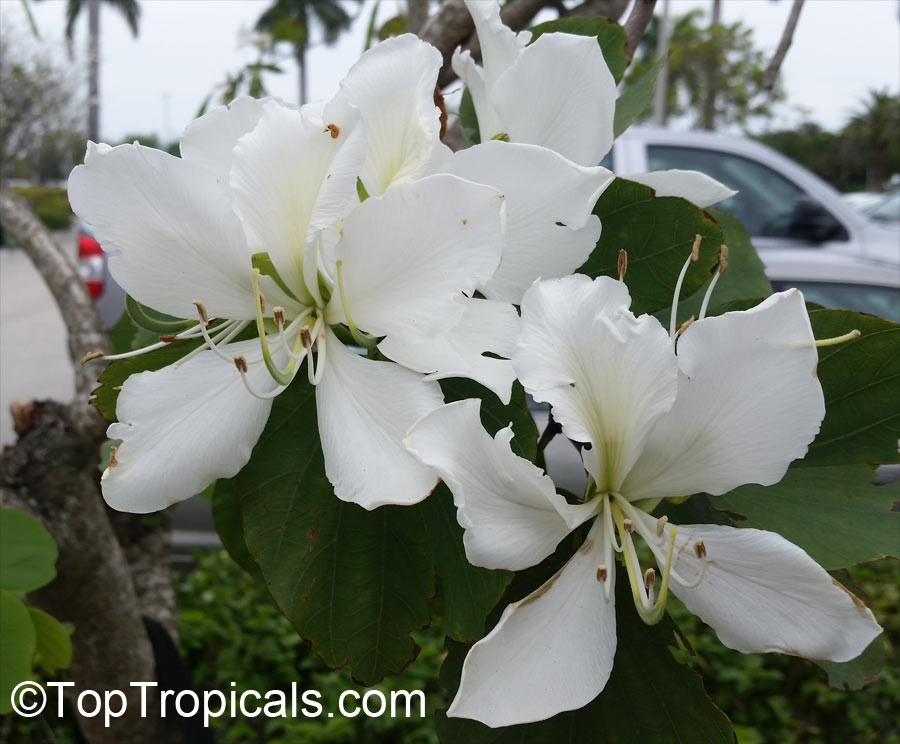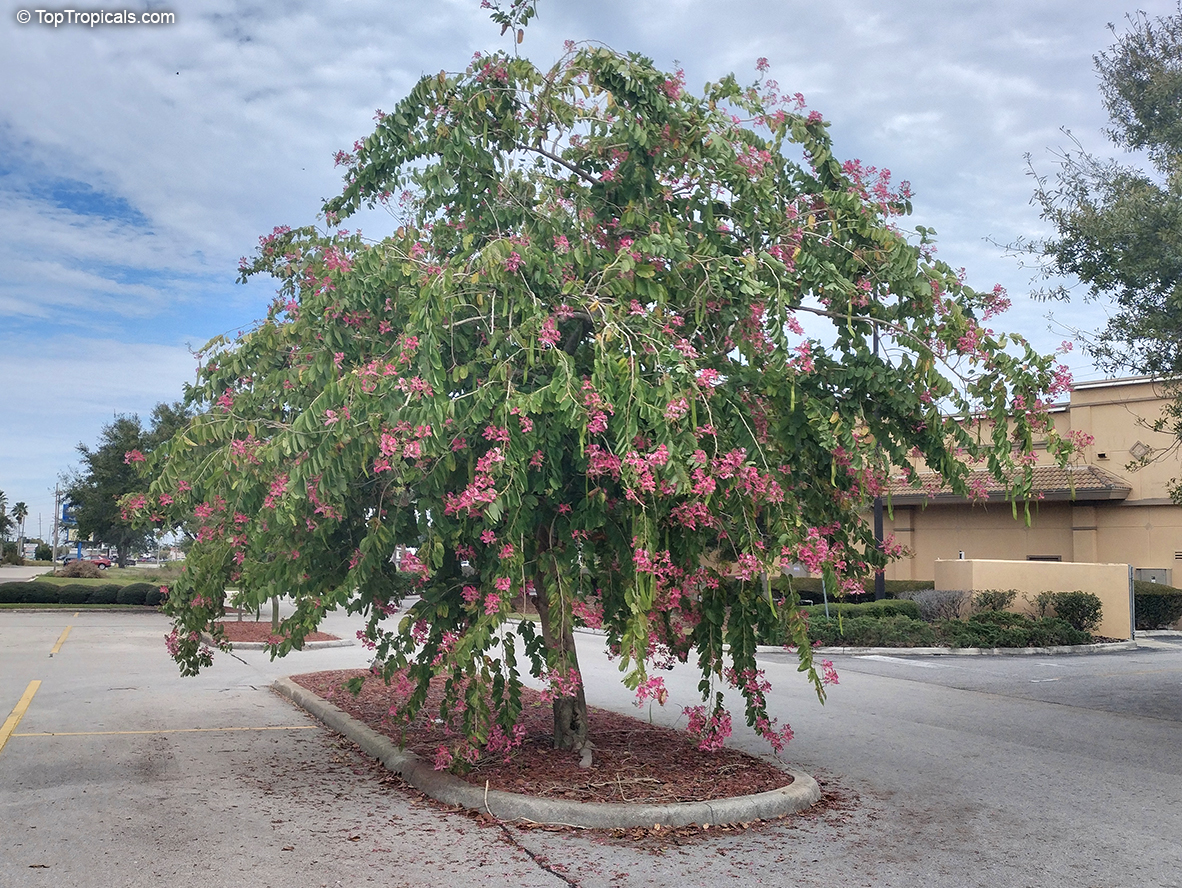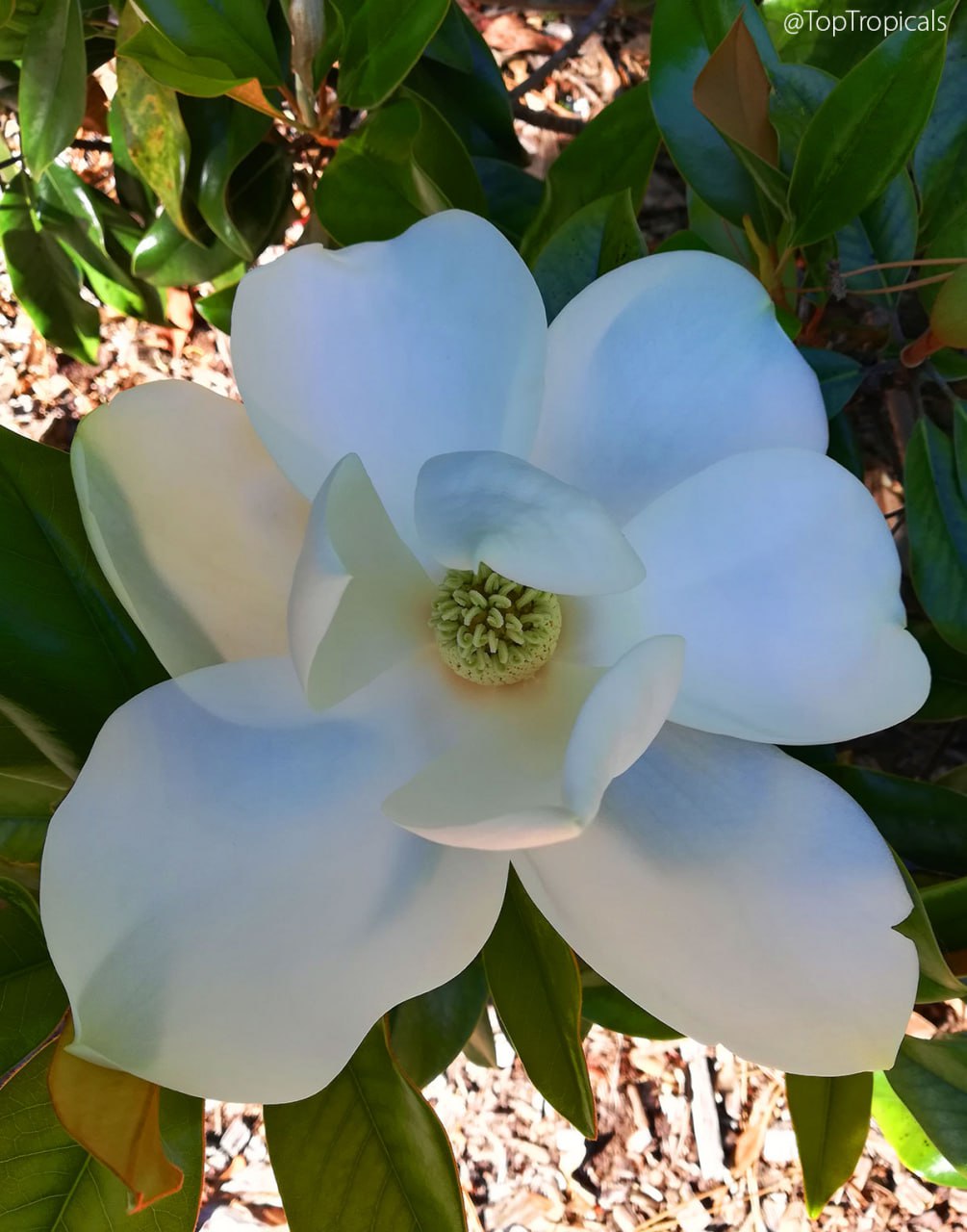Garden Blog - Top Tropicals
Date:
Discover 10
best fruit trees to grow
in Florida and Southern landscapes
Q: We recently moved into our new home in Florida, and the property is a great size - 5 acres - but it currently has no trees, just a few palms. I'm looking to plant some productive fruit trees to start building our own Food Forest. What fruit trees would you recommend as a good starting point?
A: With five acres of space, you have a fantastic opportunity to create a fruitful garden that can provide for your family for many years to come. Below are our top recommendations for must-have, easy-to-grow fruit trees that thrive in Florida's climate, grow quickly, and start producing right away.
1. Mango Tree
Mango trees (Mangifera indica) are a must-have for any Florida garden, embodying the essence of the Sunshine State with their delicious and nutritious fruit packed with vitamins and fiber. These fast-growing, low-maintenance trees thrive with minimal water and are heat-tolerant. Grafted varieties produce high-quality, fiberless fruit in just 2-3 years, while dwarf "condo" mangoes are perfect for smaller spaces or containers. While young trees need frost protection, mature trees handle cold better. Grafted mangoes offer rich taste that you won't find in commercially grown, fibrous varieties, ensuring a sweet and vibrant harvest from your own garden.
2. Avocado Tree
The Avocado tree (Persea americana) is an essential addition to any tropical or subtropical garden. Known for its health benefits and superfood status, it's a favorite fruit that's not only productive but also a beautiful ornamental tree. Some avocado varieties are more cold-tolerant than mango trees, with the ability to survive temperatures below 25F. While many enjoy growing avocado from seed, only grafted trees guarantee quality fruit and immediate production, as seedlings can take 7-8 years to bear fruit. To successfully grow avocado, ensure good drainage by planting on a raised mound (4-6 inches) and keep the soil consistently moist. There are also compact varieties like Wurtz and Fuerte that thrive in containers or small spaces, making them ideal for patios and small gardens.
3. Tropical Cherries
Tropical cherries, such as Cherry of the Rio Grande (Eugenia aggregata), Grumichama (Eugenia brazilensis), Pitomba (Eugenia luschnathiana), and Black Surinam Cherry (Eugenia uniflora var. Lolita), are popular and easy-to-grow fruit trees that offer fast growth and excellent fruit production. These compact, versatile trees thrive in both the ground and containers, starting to produce fruit almost immediately. Eugenias are low-maintenance, requiring minimal water, thriving in various soil types, and being pest-free. They are heat-tolerant and can endure cool winters, surviving light frosts. Birds love the fruit, but don't worry - there will always be plenty for everyone.
4. Barbados Cherry Tree
Barbados Cherry (Malpighia glabra), also known as Acerola, is a tropical cherry renowned for having the highest vitamin C content of any fruit. This nutrient-packed fruit is perfect for jellies, jams, and freezing without losing its vitamin C. The Barbados Cherry is a fast-growing, dense shrub that fruits multiple times a year, providing abundant harvests for gardeners seeking quick results. It thrives in alkaline soil, tolerates drought, and is relatively cold-hardy, withstanding light freezes. Birds love the fruit, making it a great addition to wildlife-friendly gardens. The dwarf variety, Nana, with its small leaves and fruit, is perfect for containers, borders, or even bonsai, adding ornamental value to any space.
5. Noni Tree
The Noni Tree (Morinda citrifolia) is a top superfood plant that makes a fantastic addition to any Southern garden. Known for its numerous medicinal benefits, Noni fruit offers anti-inflammatory properties, relief from arthritis, and support for conditions like diabetes, metabolism, and weight loss. It's even believed to help fight cancer. Noni trees grow quickly and begin producing fruit within 2 years from seed. This tough, resilient plant thrives in poor soil, endures summer heat, and withstands drought conditions. Despite its tropical appearance, Noni is surprisingly cold-hardy, recovering well after leaf damage in cooler weather. In addition to its health benefits, the Noni tree has ornamental value, with large, waxy leaves and unique fruit, where the flower appears to grow directly on the fruit!
6. Macadamia Nut Tree
The Macadamia Nut Tree (Macadamia integrifolia) is a fantastic addition to any garden, allowing you to grow these delicious, high price tag, nutrient-rich nuts right at home. These trees are cold-hardy, grow quickly, and thrive in all Florida soil types. Once established, they are productive and can tolerate both flooding and drought. Older trees can survive colder winters, while young trees need protection from temperatures below 25-26F. Macadamia trees like plenty of water and a special fertilizer program, including liquid fertilizers and microelements, to ensure healthy root development and optimal production. Aside from being rich in healthy fats, vitamins, and minerals, macadamia nuts offer numerous health benefits, such as improved digestion, heart health, weight management, and blood sugar control. They are also packed with tocotrienols - antioxidants which may protect against cancer and brain diseases.
7. Papaya Tree
Papaya trees (Carica papaya) are resilient, easy to grow, and produce fruit year-round. Rich in papain, a digestive enzyme, papayas are a superfood that promotes gut health. These fast-growing trees often begin producing fruit within the same year they're planted, providing quick rewards for gardeners. Many varieties, especially dwarf papayas, are space-efficient, reaching only 6-8 feet tall while still yielding large crops, making them perfect for small gardens. Surprisingly hardy for a tropical plant, papayas can withstand light freezes and strong winds (tested in hurricanes!). While they are self-fertile, planting 2-3 different cultivars improves pollination and increases yields. "Solo" cultivars, with their smaller, round or oval fruits, are sweet and less susceptible to fruit flies.
8. Guava Tree
Guava trees are beloved for their flavorful fruit, commonly used in juices, drinks, and desserts. Popular varieties include Tropical Guava (Psidium guajava), Cattley Guava (Psidium littorale), Cas Guava (Psidium friedrichsthalianum), and Pineapple Guava (Feijoa sellowiana). Despite their tropical nature, guavas are surprisingly cold-hardy, suitable for cooler climates and occasional frost. These trees thrive in moist conditions and can tolerate some flooding, while their compact growth makes them easy to maintain at any height or shape. Guavas are fast-fruiting, often producing fruit within a year of planting, and even some varieties in 1 gal containers. The dwarf Nana variety is perfect for container culture, producing full-sized fruit in a compact form. Guava trees are mostly pest-resistant, though mealybugs may require occasional treatment with neem oil in humid, rainy areas. Planting multiple guava trees ensures a continuous supply of fresh, juicy fruit and delicious guava juice for everyone to enjoy.
9. Jackfruit Tree
The Jackfruit tree (Artocarpus heterophyllus) is a striking, fast-growing tree known for producing the largest fruit grown on a tree, making it a showstopper in any garden. Nutrient-packed and often used as a meat substitute in South Asian cuisine, Jackfruit is also delicious in curries, chutneys, and as dehydrated chips. These trees grow quickly, have large waxy leaves, and can be maintained at a compact height of 7-8 feet, making them ideal for smaller spaces and easier cold protection. Despite being a tropical species, Jackfruit trees are relatively cold-tolerant and can survive light frost (although on the account of production volume), with established trees being more hardy than seedlings. Jackfruit trees begin producing fruit within 3-4 years from seed, and varieties come true to seed, eliminating the need for grafting, though it can be done for specific varieties.
10. Loquat Tree
The Loquat tree (Eriobotrya japonica) is a fast-growing, drought-tolerant, and highly cold-hardy tropical fruit tree that thrives in Florida gardens. Loquats are heavy producers, with juicy, aromatic fruit that ripens from early spring to early summer, offering a delicious apricot-like flavor. This compact tree is perfect for small gardens, beginners, and those with limited space. Loquats are undemanding, thriving in any soil and withstanding summer heat, winter cold, heavy rains, and occasional flooding. Nutrient-rich, they are high in sugar, acids, vitamins B and C, minerals, and pectin. Loquats are versatile, enjoyed fresh or used in fruit salads, jams, jellies, chutneys, pies, sauces, and even wine-making, and they are often used as a natural sweetener.
Date:
What trees are fruiting and blooming right now?
Photo above: Tabebuia chrysotricha - Dwarf Golden Tabebuia
Q: What tropical trees are fruiting and flowering in March?
A: There's always something blooming and fruiting, especially with spring on the way! Our garden is buzzing with bees and butterflies, and in the nursery, you'll always find plants in bloom or bearing fruit. Here are a few standout winners of the season.
Orchid Trees
Orchid trees are among the most spectacular trees in Florida, flowering from late winter through spring. They are fast-growing, not fussy about soil or water, and bloom for several weeks in a stunning display of white, purple, pink, or red flowers. In the photo: Bauhinia alba (candida) - White Orchid Tree - the most cold-hardy of all Bauhinias, tolerating temperatures as low as 26F. You can see them in full bloom across Florida right now!
Carambola - Star Fruit
Starfruit trees (Averrhoa carambola) have been fruiting in our garden since fall, and they just keep producing! We've had so many starfruits that we ended up making lots of jam.
Calliandra
Calliandras are known to be spectacular winter bloomers, but in our garden, they
seem to flower year-round. They make fantastic ever-blooming hedges or
striking small specimen trees.
In the photo: red-flowering Calliandra tweedii "With Love" - Red Tassel Flower, yright now, this
beautiful bush is covered in red blooms in front of our office at Sebring
Farm.
Mulberry Trees
Yes, it's Mulberry season! Some varieties have already ripened, while others are just about to. We're competing with the birds to see who gets the first fruit, but honestly, there's plenty for everyone! These trees are very cold hardy and highly productive.
Loquat Trees
Loquat trees (Eriobotrya japonica) are loaded with fruit right now! We've started picking them and have already made some delicious preserves - you can only eat so many fresh. Loquats continue fruiting through April and May, making them one of the most rewarding, easy-to-grow, and productive fruit trees.
Tabebuia Trees
Tabebuia
trees put on a spectacular show from late winter through spring! Golden
and pink Tabebuias are small, compact trees that fit any yard and deliver a
breathtaking display year after year.
Check out these short videos of blooming Tabebuias:
Tabebuia
chrysotricha - Dwarf Golden Tabebuia
Tabebuia
impetiginosa - Dwarf Pink Tabebuia, Pau DArco, Taheebo
Which Champaka tree is better - White or Golden?
🏆 Golden or White Champaka - Which Tree Should You Choose?
Both the White and Golden Champaka trees are prized for their intoxicating, fruity fragrance - often described as smelling like sweet bubble gum. Their blooms are famously used in the creation of Joy, one of the world's most expensive perfumes. While they share many similarities in scent and beauty, there are key differences between the two.
⚪️ White Champaka - Magnolia (Michelia) x alba (in the video) is a sterile hybrid between Magnolia champaca and Magnolia montana. Because it does not produce seeds, this variety is always propagated through grafting or air layering. One major benefit of this is that grafted White Champaka trees begin blooming right away, even when they are still small. This makes Magnolia alba a more reliable and consistent bloomer from a young age.
⚪️ White Champaka is also more compact and slower-growing than the Golden variety, making it especially suitable for container growing and smaller garden spaces.
- 🟡 Golden Champaka - Magnolia (Michelia) champaca is the original species and grows from seed, which means it typically takes a few years to start blooming. However, it has an edge in cold hardiness and is more tolerant of cooler temperatures compared to the White Champaka.
🟡 Golden Champaka tends to be more vigorous and taller, making it a better fit for larger landscape plantings where space and height are not limiting factors.
✍️ In Summary:
✔️ Fragrance: Both smell similar - like fruity bubble gum - and are used for perfume.- ✔️ White Champaka: Grafted, blooms sooner, compact growth, ideal for pots.
- ✔️ Golden Champaka: Grown from seed, blooms later, more cold tolerant, vigorous growth.
- ✔️ Both trees are exceptional choices for Southern gardens. Whether you choose the early-blooming, compact White Champaka or the hardy, golden-flowered original, you'll be adding one of the most enchanting perfume trees to your landscape. Plant both!
See side-by-side comparison of the 2 varieties of Champaka trees in the next post👇
🛒 Plant Champaka trees and always have your own Joy Perfume
🎥 Magnolia (Michelia) x alba, White Champaka
Golden Champaka: video 1 and video 2
📚 Learn more about White and Golden Champakas:
#Perfume_Plants #Container_Garden #Trees
🟢 Join 👉 TopTropicals
What does a mature Champaka Tree look like? Practical Growing Guide
Joy Perfume tree (Magnolia champaca)
- 🏵 Champaka, or Joy Perfume tree (Magnolia champaca) is the most desirable perfume tree for Southern landscapes - and a Signature Plant of Top Tropicals! You can see several of these beautiful trees around our B-Farm in Sebring, including the one right by the office front door.
- 🏵 The flowers are used to make the world's most expensive perfume, Joy - and they smell like fruity bubble gum… you won't be able to stop sticking your nose in this flower! The Joy Perfume Tree blooms on and off year-round.
- 🏵 The Champaka tree has a striking columnar shape and becomes very bushy and full when established - whether in a pot (with a proper fertilizer program) or in the ground.
- 🏵 The lemon-lime, light green leaves are lush, soft, and tropical-looking, with a unique and beautiful color!
- 🏵 Champaka trees begin flowering within 2-3 years from seed.
- 🏵 Singing birds love this tree and in Spring make their nests in its bushy crown.
- 🏵 The tree is relatively cold hardy and can withstand light freeze for a short time once established. Make sure to provide regular watering for Champaka tree.
- 🏵 We have beautiful Champaka trees in all sizes:
3 gal pot: 3-4 ft tall - ready to bloom within a year, can be shipped
7 gal pot: 5-6 ft tall - ready to bloom, can be shipped
15 gal pot: 7-8 ft tall - have already bloomed, pick up or delivery*
25 gal pot: 10 ft tall - have already bloomed, pick up or delivery*
* Free delivery for qualified orders
🎥 These Champaka trees in the video are 5 years old (3 years in the ground) and already bloomed for the last 3 years!
🛒 Claim Your Joy Today – Own Your Perfume Champaka!
📚 Learn more from previous posts:
- 🟡How to grow Magnolia champaca and get some Joy
- 🟡When does Champaka tree start blooming?
- 🟡Why Champaka is such a popular perfume tree
- 🟡Flower of the most expensive perfume
- 🟡White Champaka
- 🟡Article about Champaka
#Perfume_Plants #Container_Garden #Trees
🔴 Join 👉 TopTropicals
What does Joy Perfume flower smell like?
Magnolia champaca, the Joy Perfume Tree in full bloom
- 🏵 Meet Magnolia champaca, the Joy Perfume Tree - the most desirable perfume tree for Southern gardens and a Signature Plant of Top Tropicals!
- 🏵 At our Farm in Sebring, these stunning trees bloom almost year-round, filling the air with a fruity, enchanting fragrance.
- 🏵 Yes, this is the flower used to make the world's most expensive perfume - Joy! And it smells like fruity bubble gum... you won’t stop sniffing it!
- 🏵 With lush, lemon-lime leaves and a tall, elegant shape, Champaka is as beautiful as it is fragrant.
- 🏵 Visit Top Tropicals in Fort Myers or Sebring and bring home your very own Joy Perfume Tree today!
- 🏵 We have beautiful Champaka trees in all sizes:
3 gal pot: 3-4 ft tall - ready to bloom within a year, can be shipped
7 gal pot: 5-6 ft tall - ready to bloom, can be shipped
15 gal pot: 7-8 ft tall - have already bloomed, pick up or delivery*
25 gal pot: 10 ft tall - have already bloomed, pick up or delivery*
* Free delivery for qualified orders
🎥 These Champaka trees in the video are 5 years old (3 years in the ground) and keep blooming for the last 3 years!
🛒 Claim Your Joy Today - Own Your Perfume Champaka!
📚 Learn more from previous posts:
- 🟡 What does a mature Champaka Tree look like? Practical Growing Guide
- 🟡How to grow Magnolia champaca and get some Joy
- 🟡When does Champaka tree start blooming?
- 🟡Why Champaka is such a popular perfume tree
- 🟡Flower of the most expensive perfume
- 🟡White Champaka
- 🟡Article about Champaka
#Perfume_Plants #Container_Garden #Trees
🔴 Join 👉 TopTropicals
Date:
Bauhinias: trees with Orchid Flowers
and Butterfly Wings...
Photo above: Bauhinia variegata - Purple Orchid Tree, one of the most spectacular varieties.
Q: We just moved to Florida and I see these beautiful trees with large purple flowers. I was told these are Orchid trees, do you have them?
A: Bauhinias, commonly known as Orchid trees, are renowned for their captivating flowers and unique foliage. These trees typically grow to a moderate height of 15-25 feet with a spread of 10-15 feet, showcasing a rounded to vase-like shape. Thriving in hardiness zones 9-11, they exhibit resilience to heat and can withstand mild frost. There are over 300 species of Bauhinia, which are distributed in tropical and subtropical areas. These species vary in characteristics such as size, foliage, and flower color, contributing to the diversity and appeal of this genus. You can find them as trees, shrubs, and even vines.
Bauhinias are evergreen (in tropics) to semi-deciduous (in cooler climates), offering year-round beauty with intermittent blooming cycles. The peak bloom time varies depending on the species and location, often occurring in late winter to early spring, bedecking the tree with striking orchid-like flowers in hues ranging from white and pink to purple and red. The flowers boast delicate petals with intricate patterns, resembling the elegance of true orchids.
One of the distinguishing features of Bauhinia leaves is their unique bi-lobed or bilobed structure, which gives them a distinct appearance. The leaves are deeply divided, typically into two lobes or halves, hence the common name "Butterfly tree" due to their resemblance to butterfly wings. This characteristic is often used as an identifying trait for Bauhinia species. The bilobed leaves add to the visual appeal of the tree, contributing to its ornamental value in addition to its beautiful flowers.
Photo above: Bauhinia monandra - Napoleons Plume, starts flowering in small size. This one is very beautiful but the most cold sensitive and should be grown in pots in areas with winter freeze. It will happily bloom in container!
Low-maintenance by nature, Bauhinias require minimal upkeep. Annual feeding with a balanced fertilizer enhances growth and flowering. Pruning is generally optional but can be done in late winter or spring, after flowering, to maintain shape or remove dead or damaged branches. These trees thrive in full sun, preferring well-drained soil. With their enchanting blooms and easy care requirements, Bauhinia orchid trees are a delightful addition to any landscape, and a colorful specimen for tropical winter gardens.
In addition, Orchid trees grow fast and provide excellent shade. They can make a shady spot in your garden in no time, giving relief from the hot sun. This is really valuable, especially in places where it gets very hot. So, not only are Orchid trees pretty to look at with their lovely flowers, but they're also great for keeping you cool!
Read more about Bauninias:
Bauihnias: Orchid trees with Butterfly flowers... and leaves
Photo above: Bauhinia x alba (candida) - White orchid tree, the most cold hardy variety that can take light freeze once established.
Photo above: Bauhinia purpurea - Purple Orchid Tree, one of the most popular and easy trees in Southern landscapes.
How to protect Mango Trees from Cold Weather
🌞 Mango trees love warm weather. They grow best in temperatures between 70F to 100F.
📍 Cold weather can be harmful to mango trees: when the temperature drops below freezing, trees can get damaged. Frost can hurt young leaves and flowers, reducing the amount of fruit.
💬 Ways to protect mango trees from cold
🔹 Right location: Plant in sunny areas with protection from cold winds.
🔹 Cover them up: Use blankets or frost cloth to protect young trees.
🔹 Add mulch: Helps keep the roots warm during cold weather.
🔹 Move potted trees: Bring them inside when it gets too cold.
🔹 Use Sunshine Boosters to improve tree hardiness
➡ Fertilized mango trees are stronger and more resilient.
- ➡ They grow faster and have better root systems, making them more hardy against cold weather.
- ➡ Sunshine Boosters provide the essential nutrients needed for strength and vigor, helping plants recover faster from cold damage.
Sunshine Boosters "Mango Tango" makes mango trees stronger and more resistant to cold. A well-fed tree can survive cold better and produce more fruit. With Sunshine Boosters, you ensure your mango trees stay healthy, even in chilly weather!
📚 Learn more from the articles:
Mango trees and how to deal with cold weather
How to fertilize your Mango trees
📸 See photo in the next post👇
🛒 Shop Sunshine Boosters
#Fertilizers #Mango
🔴 Join 👉 TopTropicals
How big is the Little Gem?
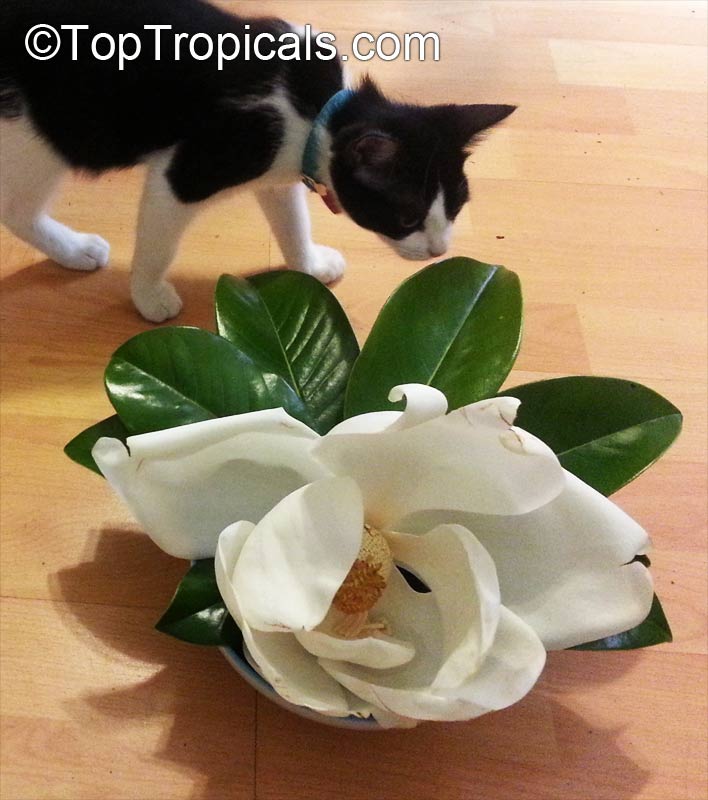
Little Gem Magnolia - Magnolia grandiflora - Southern Magnolia
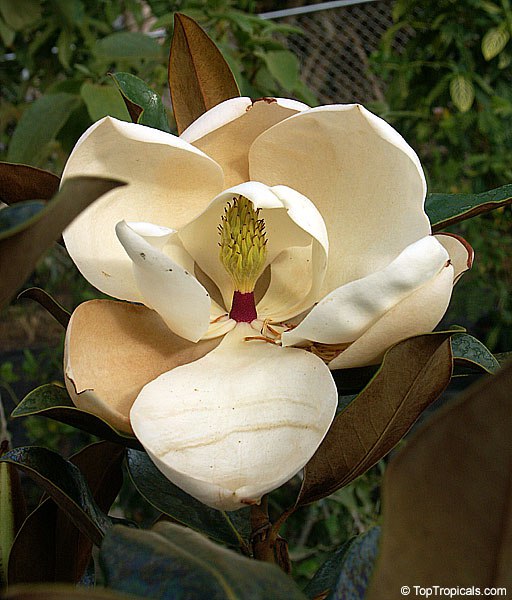
Little Gem Magnolia - Magnolia grandiflora - Southern Magnolia, flower
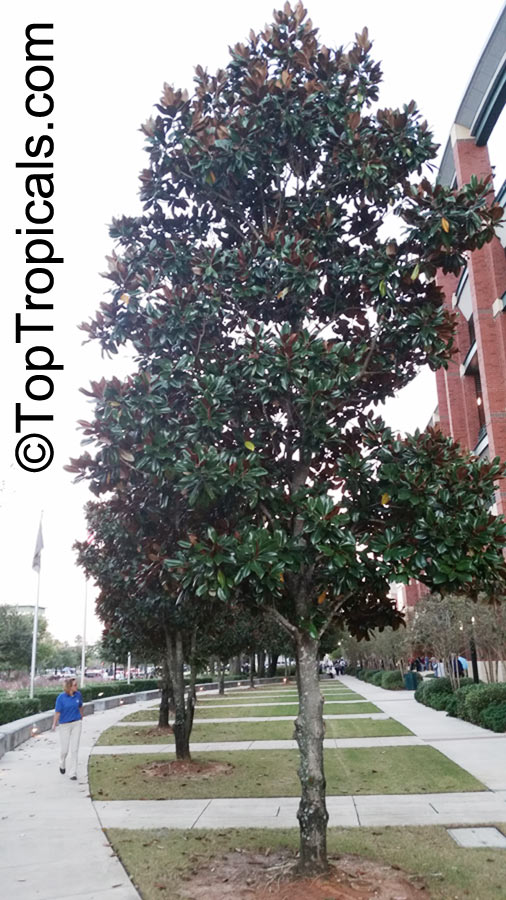
Little Gem Magnolia - Magnolia grandiflora - Southern Magnolia, tree
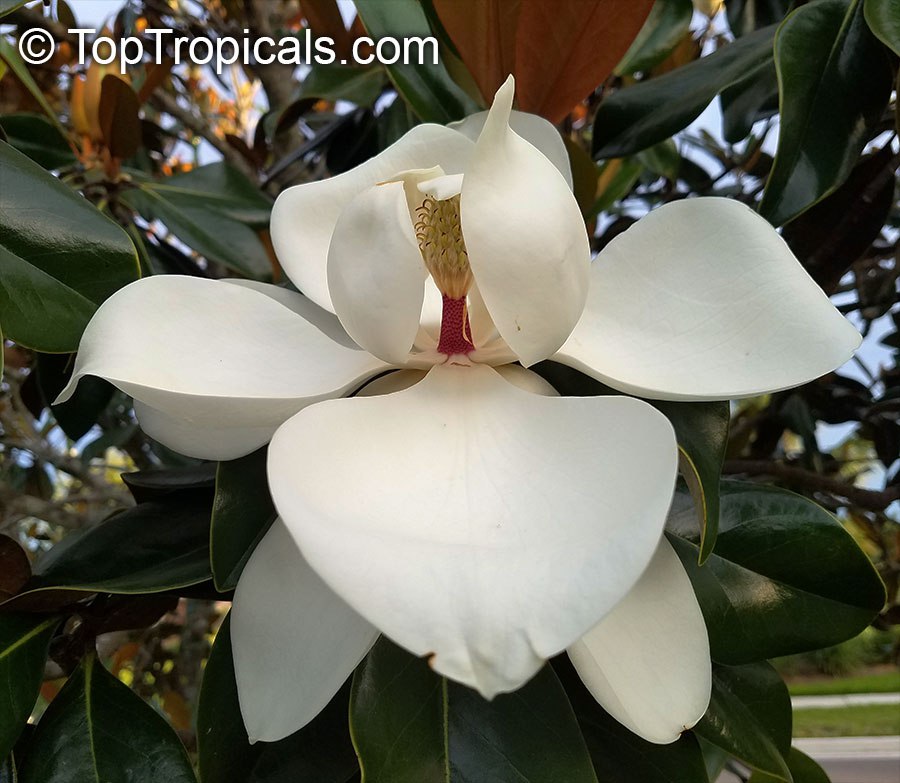
Little Gem Magnolia - Magnolia grandiflora - Southern Magnolia, flower
- 🕊 Looking for a cold-hardy tree with majestic flowers and a scent that could make angels swoon? Meet the Little Gem Magnolia! This delightful dwarf variety of the Magnolia grandiflora - Southern Magnolia - packs all the charm without the towering height.
- 🕊 With large, perfect white flowers that emit a divine fragrance, this beautiful columnar tree is like nature's perfume dispenser.
- 🕊 The leaves? They’re fluffy and brown underneath, like a teddy bear wearing a velvet jacket!
- 🕊 Though it’s called a "dwarf," don’t be fooled - Little Gem can still reach up to 8-10 feet wide if planted in the ground, offering plenty of blooms even when young.
- 🕊 While it's slow-growing, this compact beauty is perfect for small gardens where space is precious. Ideal perfume tree for container garden.
- 🕊 Whether it's in a container or part of your landscape, this magnolia is a total showstopper. If you're ready for a tree that blends elegance, fragrance, and manageable size, Little Gem is your new best friend!
📚 Learn more:
- · Southern Magnolia from the time of the dinosaurs
- · Tropical Magnolias
- · Plants with scents as heady as incense: Enchanted Magnolias - Joy in your life
🛒 Order Little Gem Magnolia
#Perfume_Plants #Trees
🔴 Join 👉 TopTropicals
When does Champaka tree start blooming?
Joy Perfume tree (Magnolia champaca) flowers
- 🏵 Champaka, or Joy Perfume tree (Magnolia champaca) blooms in and off year around. This year it's the third time we see our trees with flowers.
- 🏵 The flowers are used to make the world's most expensive perfume 'Joy' and smell like fruity bubble gum... you can't stop sticking your nose in this flower!
🎥 Yellow Champaka in bloom. This tree is 3 years old.
📚 Learn more from previous posts:
- 🟡Why Champaka is such a popular perfume tree
- 🟡Flower of the most expensive perfume
- 🟡White Champaka
- 🟡Article about Champaka
🛒 Shop Champaka - Joy Perfume Tree
#Perfume_Plants #Container_Garden #Trees
🔴 Join 👉 TopTropicals
Smell the Little Gem
🕊 Get up close with the Magnolia grandiflora - Southern Magnolia - its huge, creamy white petals look like sculpted wax, and the scent is fresh, lemony, and unforgettable!
📚 Learn more:
- · How big is the Little Gem?
- · Southern Magnolia from the time of the dinosaurs
- · Tropical Magnolias
- · Plants with scents as heady as incense: Enchanted Magnolias - Joy in your life
🛒 Plant the Iconic Southern Magnolia
#Perfume_Plants #Trees
🔴 Join 👉 TopTropicals











